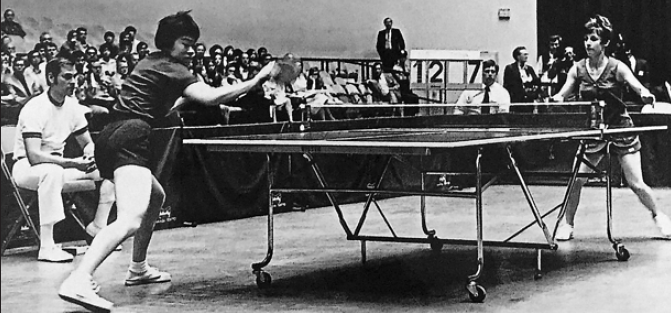How ping-pong diplomacy broke the mold
By Zhang Yunbi in Beijing and Zhao Xu in New York | China Daily Global | Updated: 2019-09-17 01:48

Evolving agenda
Wu Xinbo, a leading scholar and professor of US studies based in Shanghai, took part in events in the city with two visiting US presidents — Bill Clinton and Barack Obama — in 1998 and 2009 respectively.
When Clinton visited Shanghai after trips to Xi'an, capital of Shaanxi province, and Beijing, Wu was the only international relations expert alongside seven other local residents invited to talk to the US leader at a symposium at the city library.
Wu said he was impressed when Clinton asked him for his opinion on China-US relations.
"He commended my analysis after I expressed my views, and then he talked about the Taiwan question," Wu said, adding that Clinton clearly stated that the US does not support "Taiwan independence"
Both governments pinned high hopes on that trip, said Wu, who is now director of the Center for American Studies at Fudan University in Shanghai.
"But at the time, political support within the US toward developing relations with China was not very strong, and many US politicians were unable to observe China's economic growth and social changes that had taken place," Wu added.
Reviewing the evolving China-US agenda in recent decades, Wu said the fact that the two countries have advanced their relationship and are constantly adapting to changing times is a "great success".
Speaking at a news conference after his talks with Bush in Shanghai on Oct 19, 2001, Jiang highlighted the two countries' shared duties in championing peace and security in the Asia-Pacific region and the world, and in fighting terrorism. He urged the two sides to properly address their ties, particularly the Taiwan question.
Bush welcomed China's forthcoming admission to the World Trade Organization in December that year, and described US ties with China as candid and constructive, People's Daily reported.
Eighteen years later, President Xi Jinping and his US counterpart Donald Trump met on the sidelines of the G20 Summit in Osaka, Japan, in June.
They discussed the economy and trade, Chinese students studying in the US, the Taiwan question and the Korean Peninsula nuclear issue, according to a release by the Foreign Ministry.
Wu said that at times the two countries have had different priorities, but have succeeded in finding common ground.
"The major lessons for the two countries are that they should be very prudent about issues involving the core interests of each other, such as the Taiwan question … and neither of them should let bilateral ties be subject to domestic politics," the professor added.
Yuan Peng, a leading US expert and president of the China Institutes of Contemporary International Relations, said that despite the Taiwan question, many new issues that emerged — including the Korean nuclear situation, the South China Sea, global economic governance and climate change — were not included in the landmark joint statements issued by the two governments in 1972, 1978 and 1982.
On the basis of remaining true to the principles outlined by the milestone documents, the two countries should continue seeking a new framework to complement them, and "only by so doing can they shape more-balanced growth for China-US relations", Yuan said.
He added that the two countries should "reassure each other". Washington needs to recognize and accept China's peaceful rise, while Beijing should convince the US that this rise will not be achieved through challenging US power, Yuan added.
























